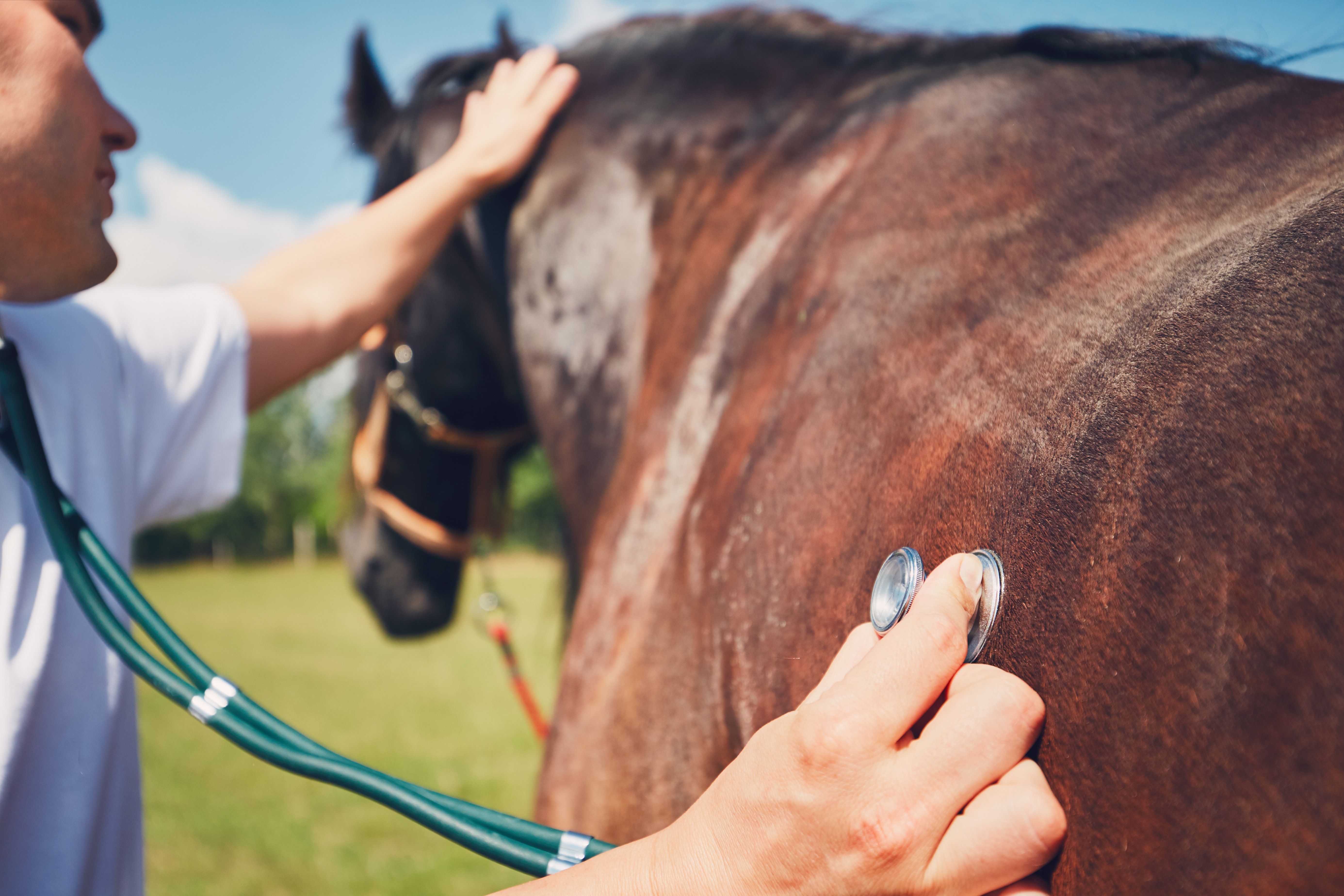Adapted with permission from EQUUS.
The arrival of a new horse in your life is always exciting. Acquiring a rescue horse, however, is very different from buying a healthy, sound horse who has had excellent care throughout his life. A rescue horse with an unknown past may behave in surprising ways, and his health may be compromised in ways that can never be fully restored. An owner of a rescued horse recently put it this way, “I guess that is the hard thing about rescue. You never know what is going to happen.” The road ahead may have a few clouds along with that sun, and it may take some unexpected turns.

The American Association of Equine Practitioners (AAEP) has published and regularly updates Care Guidelines for Equine Rescue and Retirement Facilities. These guidelines provide a road map, which veterinarians follow as much as possible. But each rescue horse is unique. You’ll need to be ready to adapt to each horse’s needs and circumstances. Taking on a rescue horse requires patience and dedication, and it can be one of the most rewarding experiences a horse-person can have. Here’s advice for
ATTEND TO RESCUE HORSE’S BASIC HEALTH NEEDS
As soon as you take legal ownership of a rescue horse, ask your veterinarian to conduct a full physical exam. Ideally, you’d schedule this ahead of time and can have it done the very same day the horse comes into your possession. If you adopted the horse through a rescue organization, he probably has received some veterinary attention and records may be available. But you’ll want your own veterinarian to get to know the horse. A one-on-one visit may also provide a more in-depth assessment than was possible by a busy rescue organization.
Have your veterinarian do an exam. The veterinarian will want to do a full workup. from lungs to lameness to eyesight, and perhaps suggest having bloodwork done. He or she will also be able to estimate the horse’s age, which is one of the first questions everyone seems to have. Remember, though, that age can only be estimated, and the older the horse, the less accurate the estimate will be. The completed exam will help establish a health record as well as identify any existing or potential problems. You’ll want to have a complete picture of the challenges you may face so you can prioritize care and resources. A veterinary visit can alsohave important legal ramifications if there is an ongoing case surrounding the horse’s circumstances. A medical record is considered a legal document that your veterinarian is required by law to retain for a certain number of years.
It’s smart to have any mare or filly checked for pregnancy during the initial exam and then again in 30 days. Stories of rescuers being surprised by the arrival of a foal are not uncommon. If the horse is a colt or stallion, talk to your veterinarian about getting him gelded as soon as his health stabilizes.
For your bookshelf:
The Ultimate Guide to Horses in Need
Saving Red: The True Story of a Rescued Horse Turned Rescuer
Changing Horses: One Woman’s Journey through Horse Racing, Horse Rescue, and Horse Reflection
Have a farrier take care of his hooves. Also arrange to have your farrier come out as soon as possible. Many rescue horses have not had hoof care in a very long time. You’ll undoubtedly want an assessment of your horse’s feet, and your farrier can help outline a long-term plan to improve them. If it looks like the horse may have had laminitis in the past, coordinating communication between your veterinarian and farrier is a good idea. You may decide to take a series of radiographs to serve as a “baseline” for comparison later.
Put him in quarantine: A rescue horse will most likely have an unknown history and uncertain vaccination status. To protect other horses on your property, quarantine the newcomer for two to three weeks. Previously established groups can be maintained, however. For instance, if a rescuer acquires a group of yearlings, they can—and for their emotional well-being, should—continue to live together.
The primary purpose of quarantine is to prevent the spread of respiratory diseases such as equine herpesvirus or rhinopneumonitis, influenza and strangles (Streptococcus equi). Take the temperature of the new horse daily, if he’s amenable to such handling, because a fever may occur before respiratory signs appear. Quarantine will also protect your herd from non-respiratory diseases such as salmonellosis. Ideally, the caretakers for the quarantined animals will not be the same people caring for healthy horses. At a minimum, the healthy horses need to be attended to first, then any horses that may have been exposed to disease but are not ill, and finally, any sick horses.
If he’s healthy, a horse in quarantine can be vaccinated, which will give his immune system time to respond before he’s given veterinary clearance to move to general housing. The exception to this may be an extremely thin horse, whose immune system may be compromised. It may make sense to delay vaccinations until his condition is stable.
Check him for parasites. Finally, if possible, supply your veterinarian with a manure sample from the horse during this initial visit. Not all rescued horses are “wormy,” but you’ll need to know the horse’s parasite status to begin an appropriate deworming regimen. Your veterinarian can send the sample to a laboratory and help you interpret the result. Deworming the horse while he’s still in quarantine prevents “high shedders” from contaminating your pastures.






